
In September 2022 Oxbow's bookshop and distribution buisness merged with Pen & Sword Books, a family run independent publisher of history books. The book distribution aspect of our business will continue to bring you some of the best books in the field of archaeology and related disciplines as Casemate UK. The Oxbow Books publishing imprint remains as a separate entity, still sold and distributed exclusively by us.
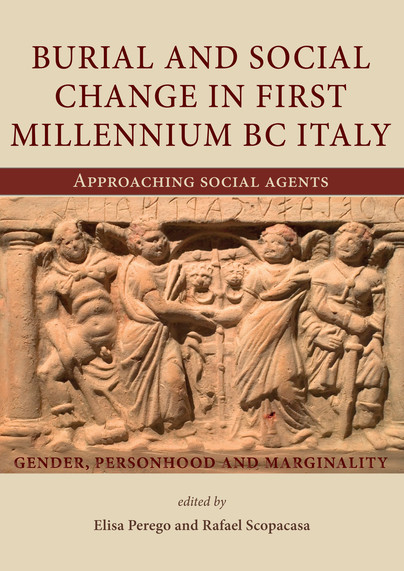
Format: Paperback
Pages: 336
ISBN: 9781785701849
Pub Date: 30 Nov 2016
Description:
In the first millennium BC, communities in Italy underwent crucial transformations which scholars have often subsumed under the heading of ‘state formation’, namely increased social stratification, the centralisation of political power and, in some cases, urbanisation. Most research has tended to approach the phenomenon of state formation and social change in relation to specific territorial dynamics of growth and expansion, changing modes of exploitation of food and other resources over time, and the adoption of selected socio-ritual practices by the ruling élites in order to construct and negotiate authority. In contrast, comparatively little attention has been paid to the question of how these key developments resonated across the broader social transect, and how social groups other than ruling élites both promoted these changes and experienced their effects.
The chief aim of this collection of 14 papers is to harness innovative approaches to the exceptionally rich mortuary evidence of first millennium BC Italy, in order to investigate the roles and identities of social actors who either struggled for power and social recognition, or were manipulated and exploited by superior authorities in a phase of tumultuous socio-political change throughout the entire Mediterranean basin. Contributors provide a diverse range of approaches in order to examijne how power operated in society, how it was exercised and resisted, and how this can be studied through mortuary evidence. Section 1 addresses the construction of identity by focusing mainly on the manipulation of age, ethnic and gender categories in society in regions and sites that reached notable power and splendour in first millennium BC Italy. These include Etruria, Latium, Campania and the rich settlement of Verucchio, in Emilia Romagna. Section 2 offers a counterpoint to Section 1 by focusing on the concepts of ‘periphery’, marginality and the frailty of élite (or sub-élite) power in phases of dramatic socio-political change. Moreover, this Section approaches the idea of identity construction in ‘fringe’ geographical areas that are sometimes overlooked in Anglophone scholarship, such as the Veneto, Samnium, western Emilia and Trentino–South Tyrol. With its overall emphasis on scholarly multivocality, this volume is one of the first ever to strongly advocate for a study of social exclusion and extreme social marginality in late prehistoric and proto-historic Italy.
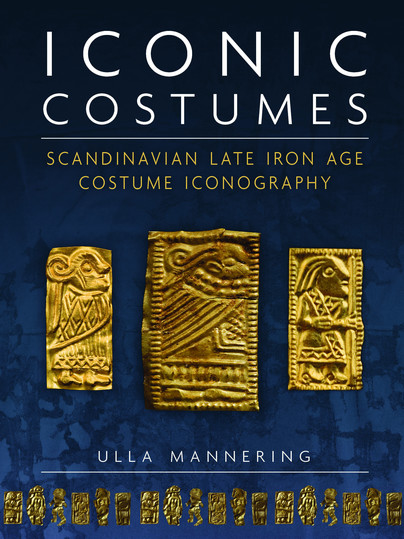
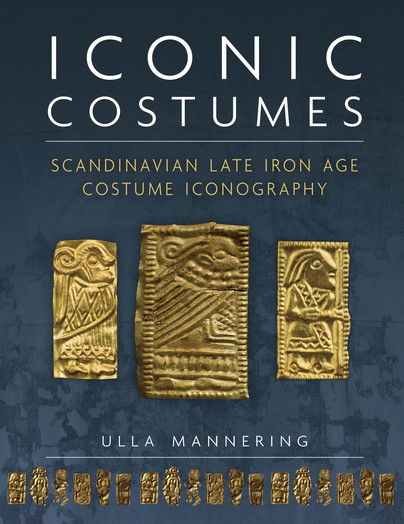
Pages: 216
ISBN: 9781785702150
Pub Date: 30 Nov 2016
Pages: 216
ISBN: 9781789255478
Pub Date: 15 Nov 2020
Description:
This richly illustrated book presents a selection of the rich and varied iconographic material from the Scandinavian Late Iron Age (AD 400-1050) depicting clothed human figures, from an archaeological textile and clothing perspective. The source material consists of five object categories: gold foils, gold bracteates, helmet plaques, jewellery, and textile tapestries and comprises over 1000 different images of male and female costumes which are then systematically examined in conjunction with our present knowledge of archaeological textiles.In particular, the study explores the question of whether the selected images complement the archaeological clothing sources, through a new analytical tool which enables us to compare and contrast the object categories in regard to material, function, chronology, context and interpretation.
The tool is used to record and analyze the numerous details of the iconographic costumes, and to facilitate a clear and easy description. This deliberate use of explicit costume shapes enhances our interpretation and understanding of the Late Iron Age clothing tradition.Thus, the majority of the costumes depicted are identified in the Scandinavian archaeological textile record, demonstrating that the depictions are a reliable source of research for both iconographical costume and archaeological clothing. The book contributes with new information on social, regional and chronological differences in clothing traditions from ca. AD 400 to the Viking Age.

Format: Paperback
Pages: 350
ISBN: 9781785705717
Pub Date: 15 Nov 2016
Illustrations: 265 b/w figs
Description:
This book is the first in a series of volumes which form the published proceedings of the 9th meeting of the International Council of Archaeozoology (ICAZ), held in Durham in 2002. The 35 papers present a series of case studies from around the world. They stretch beyond the standard zooarchaeological topics of economy and ecology, and consider how zooarchaeological research can contribute to our understanding of human behaviour and social systems.
The volume is divided into two parts. Part 1, Beyond Calories, focuses on the zooarchaeology of ritual and religion. Contributors discuss ways to approach questions of ritual and religion through the faunal record, and consider how material culture depicting and/or associated with animals can provides clues about ideology, religious practices and the role of animals within spiritual systems. Part 2, Equations for Inequality, looks at questions of identity, status and other forms of social differentiation in former human societies. Contributors discuss how differences in food consumption, nutrition, and food procurement strategies can be related to various forms of social differentiation among individuals and groups.
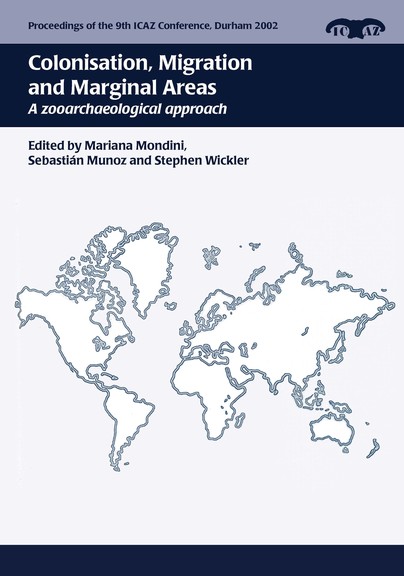
Format: Paperback
Pages: 128
ISBN: 9781785705151
Pub Date: 15 Nov 2016
Series: Proceedings of the 9th ICAZ Conference
Description:
Human migration tends to involve more than the odd suitcase or two - we often carry other organisms on our travels, some are deliberately transported, others move by accident. This volume of 12 papers offers a zooarchaeological approach to questions surrounding the nature and extent of human colonisation and migration, and the adaptation of humans to new and sometimes extreme or challenging environments. The volume is divided into two parts: Part 1 takes up the theme of Human and Animal Migration and Colonisation.
Contributors consider the relationship between human movements and the movements of animals and animal products; case studies look at Neolithic population movements in Oceania, the Norse colonisation of Greenland, and the European settlement of Virginia. Part 2 focuses on the topic of Behavioural Variability in the So-Called Marginal Areas. Contributors offer various interpretations of the concept of 'marginality', from climatic extremes of the Arctic cold, and the heat and aridity of western North America, to the geographical remoteness of Patagonia, and the cultural circumstances surrounding the beginnings of transhumant pastoralism in prehistoric southeastern Europe.
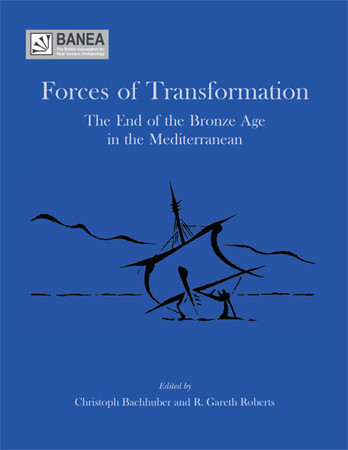
Format: Paperback
Pages: 236
ISBN: 9781842175033
Pub Date: 15 Nov 2016
Series: BANEA monograph Series
Illustrations: 149 illus
Description:
The volume is the first in nearly a decade to focus a wide range of scholarship on one of the most compelling periods in the antiquity of the Mediterranean and Near East. It presents new interpretive approaches to the problems of the Bronze Age to Iron Age transformation, as well as re-assessments of a wide range of high profile sites and evidence ranging from the Ugaritic archives, Hazor, the Medinet Habu reliefs, Tiryns and Troy. Implications for a changing climate are also explored in the volume.
The end of the Bronze Age in the Mediterranean and Near East is a huge challenge requiring a diverse, global, flexible and open minded strategy for its interpretation - it is too vast and complex for any one scholar or interpretive approach. The scope of this volume is great, but not overwhelming, as the papers are organized coherently into themes considering climate, exchange and interregional dynamics, iconography and perception, the built environment - cemeteries, citadels, and landscapes, and social implications for the production and consumption of pottery. Thus, Forces of Transformation is broad enough to address many of the major concerns of the end of the Bronze Age, and also to encapsulate the current position of scholarship as it relates to this problem.
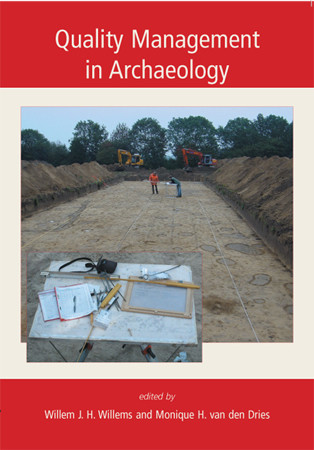
Format: Paperback
Pages: 168
ISBN: 9781842172759
Pub Date: 15 Nov 2016
Description:
Quality Management in Archaeology deals with the effects of the profound changes that have had an impact on the discipline of archaeology all over the world. In North America, in Europe and increasingly in other parts of the world, new legislation and international treaties have changed its position in society. What was once a university based research activity by a limited number of academics has become a socially relevant field with many practitioners that are mostly employed in some branch of archaeological resource management.
Archaeology has been successful in persuading governments and the general public that more should be done to preserve archaeological heritage and to investigate it where it will be irretrievably lost. The scale and frequency of archaeological work has increased vastly, at considerable cost to society. Consequently, there is pressure to do the work efficiently and economically. At the same time, academic standards have to be maintained to assure that the end result will be the relevant knowledge about the past that society pays for. Different countries have found different approaches and solutions to deal with this dilemma. Sometimes commercial archaeology is allowed, sometimes it is not, but in every national context quality has to be managed in some way. This book presents a survey by specialists from the US, Canada, and several European countries on how this is done, what the principles are, and also the priorities. It will be useful for anyone interested in archaeological resource management.
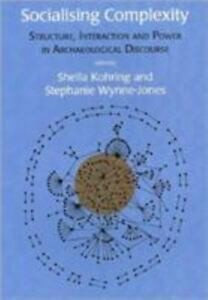
Format: Paperback
Pages: 248
ISBN: 9781842172940
Pub Date: 15 Nov 2016
Illustrations: b/w illus
Description:
Socialising Complexity introduces the concept of complexity as a tool, rather than a category, for understanding social formations. This new take on complexity moves beyond the traditional concern with what constitutes a complex society and focuses on the complexity inherent in various social forms through the structuring principles created within each society. The aims and themes of the book can thus be summarised as follows: to introduce the idea of complexity as a tool, which is pertinent to the understanding of all types of society, rather than an exclusionary type of society in its own right; to examine concepts that can enhance our interpretation of societal complexity, such as heterarchy, materialisation and contextualisation.
These concepts are applied at different scales and in different ways, illustrating their utility in a variety of different cases; to re-establish social structure as a topic of study within archaeology, which can be profitably studied by proponents of both processual and post-processual methodologies.
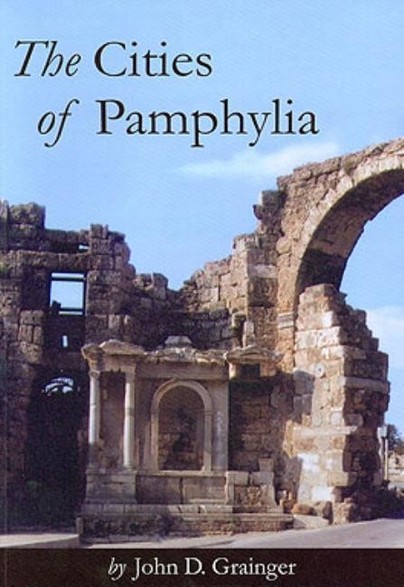
Format: Paperback
Pages: 288
ISBN: 9781842173343
Pub Date: 15 Nov 2016
Illustrations: 41 b/w illus
Description:
Pamphylia, in modern Turkey, was a Greek country from the early Iron Age until the Middle Ages. In that land there were nine cities which can be described more or less as Greek, and this book is an investigation of their history. This was a land at the margins of other great empires - Hellenistic, Roman, Arab and Byzantine - and is still off the beaten track, though Aspendos, Perge and Phaselis are all visited for their archaeology.
Only one ancient source, Strabo, discusses the area at any length, and John Grainger therefore has to bring together a wide variety of exiguous and fragmentary sources to tell the cities' story. His focus is not only regional - he is interested in the impact of outside forces on a particular civic culture. He considers the processes of city foundation, settlement, urbanisation and evolution, and the cities' mutual relations. Coastal piracy drew Pamphylia into the Roman empire, and finally, in the seventh century AD, the Arabs destroyed the cities in their wars with the Byzantine empire.
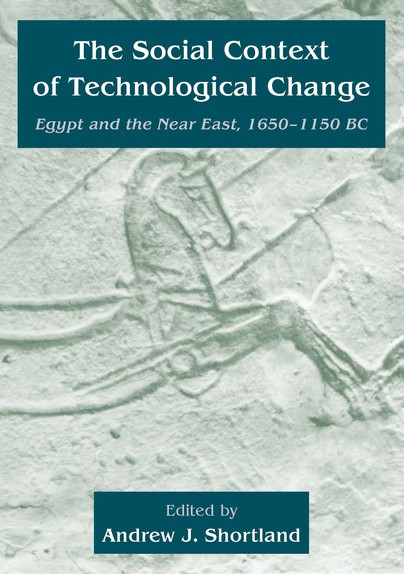
Format: Paperback
Pages: 284
ISBN: 9781842170502
Pub Date: 15 Nov 2016
Illustrations: b/w illus, 4 colour pls
Description:
The technological capabilities of the ancient world have long fascinated scholars and the general public alike, though scholarly debate has often seen material culture not as the development of technology, but as a tool for defining chronology and delineating the level of interactions of neighbouring societies. These fourteen papers, arising from a conference held in Oxford in September 2000, take the approach that technology plays a vital role in past socio-economic systems. They cover the Near East and associated areas, including Greece, Crete, Cyprus, Anatolia, the Levant, Mesopotamia and Egypt from the end of the Middle Bronze Age to the Late Bronze Age (1650-1150 BC), a period when many technological innovations appear for the first time.
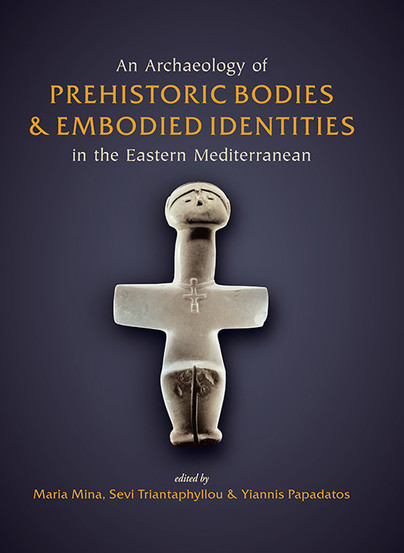
Format: Hardback
Pages: 248
ISBN: 9781785702914
Pub Date: 31 Oct 2016
Illustrations: b/w
Description:
In the long tradition of the archaeology of the eastern Mediterranean bodies have held a prominent role in the form of figurines, frescos, or skeletal remains, and have even been responsible for sparking captivating portrayals of the Mother-Goddess cult, the elegant women of Minoan Crete or the deeds of heroic men. Growing literature on the archaeology and anthropology of the body has raised awareness about the dynamic and multifaceted role of the body in experiencing the world and in the construction, performance and negotiation of social identity. In these 28 thematically arranged papers, specialists in the archaeology of the eastern Mediterranean confront the perceived invisibility of past bodies and ask new research questions.
Contributors discuss new and old evidence; they examine how bodies intersect with the material world, and explore the role of body-situated experiences in creating distinct social and other identities. Papers range chronologically from the Palaeolithic to the Early Iron Age and cover the geographical regions of the Aegean, Cyprus and the Near East. They highlight the new possibilities that emerge for the interpretation of the prehistoric eastern Mediterranean through a combined use of body-focused methodological and theoretical perspectives that are nevertheless grounded in the archaeological record.
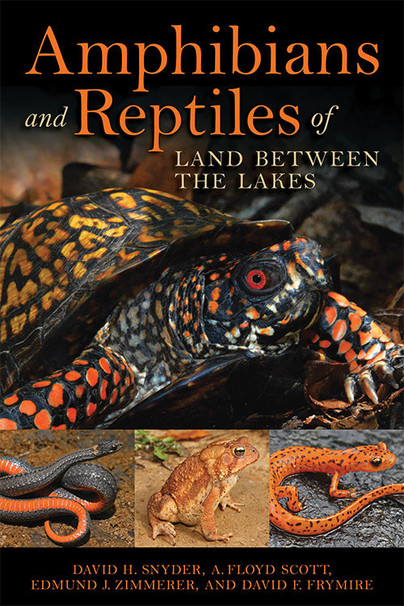
Format: Paperback
Pages: 154
ISBN: 9780813167671
Pub Date: 21 Oct 2016
Illustrations: 1 map, 92 color photos, 5 tables, 6 b&w photos
Description:
Known for its natural beauty, Land Between the Lakes National Recreation Area is the largest inland peninsula in the United States. Consisting of 170,000 acres of forested and protected public land between Kentucky Lake (Tennessee River) and Lake Barkley (Cumberland River), this scenic sanctuary is visited by more than 1.4 million nature lovers annually and encompasses many diverse habitats, each supporting a particular community of plants and animals.
Amphibians and Reptiles of Land Between the Lakes is your guide to some of the often-overlooked residents of this unique ecosystem. The authors offer detailed descriptions and stunning color photographs of the salamanders, frogs, toads, turtles, lizards, and snakes found in the region. Each entry includes the species' scientific and common names as well as information on its distribution, habitat, and natural history. An extensive glossary assists readers in identifying the animals.This handy reference illustrates the collective ecological effect that these underappreciated species have on the habitats in which they thrive. Whether you are a professional or backyard naturalist, Amphibians and Reptiles of Land Between the Lakes is an indispensable resource for understanding these fascinating creatures.
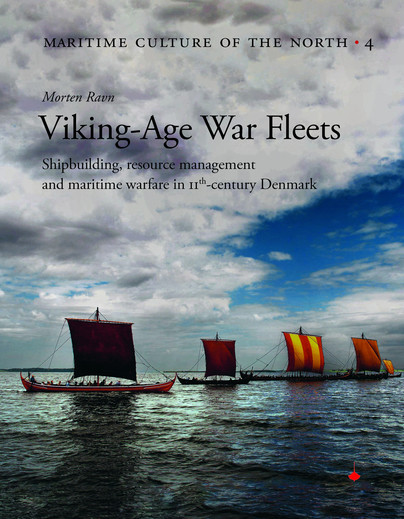
Format: Hardback
Pages: 164
ISBN: 9788785180728
Pub Date: 20 Oct 2016
Series: Maritime Culture of the North
Illustrations: 80
Description:
The military operations of Scandinavian societies in the Viking Age depended on their ships. Different types of ships were used in order to transport troops and war supplies. Some ships were designed to conduct the speedy transport of large numbers of troops, while others were specialised cargo vessels used in military operations as carriers of supplies and sometimes troops as well.
This book examines the building and use of ships for warfare in 11th century Denmark. The subjects are addressed through detailed analyses of aspects such as resources, organisational structures and naval warfare. The outcomes are a more informed understanding of 11th century Scandinavian military organisation, shipbuilding and resource management.
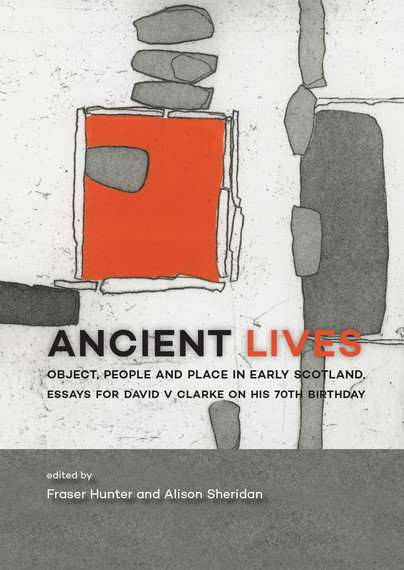
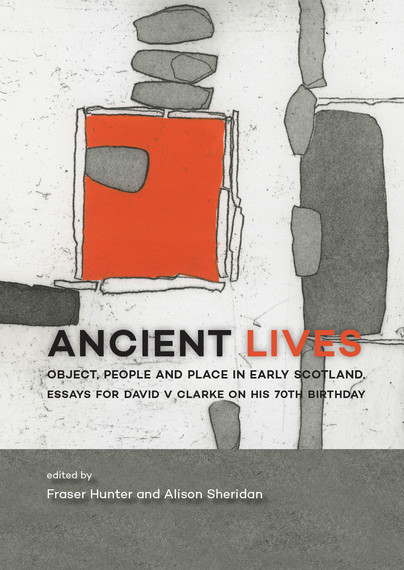
Pages: 382
ISBN: 9789088903823
Pub Date: 15 Oct 2016
Illustrations: 50bw/86fc
Pages: 382
ISBN: 9789088903755
Pub Date: 15 Oct 2016
Illustrations: 50bw/86fc
Description:
Ancient Lives provides new perspectives on object, people and place in early Scotland and beyond. The 19 papers cover topics ranging from the Neolithic to the Medieval period, and from modern museum practice to ancient craft skills. The material culture of ancient lives is centre stage – how it was created and used, how it was rediscovered and thought about, and how it is displayed.
Dedicated to Professor David V Clarke, former Keeper of Archaeology in National Museums Scotland, on his 70th birthday, the book comprises three sections which reflect some of his many interests. “Presenting the past” offers perspectives on current museum practice, especially in relation to archaeological displays. “Ancient lives and multiple lives” looks at antiquarian approaches to the Scottish past and the work of a Scottish antiquary abroad, while “Pieces of the past” offers a series of authoritative case-studies on Scottish artefacts, as well as papers on the iconic site of Skara Brae and on the impact of the Roman world on Scotland. With subjects ranging from Gordon Childe to the Govan Stones and from gaming pieces to Grooved Ware, this scholarly and accessible volume provides a show-case of new information and new perspectives on material culture linked, but not limited to, Scotland.
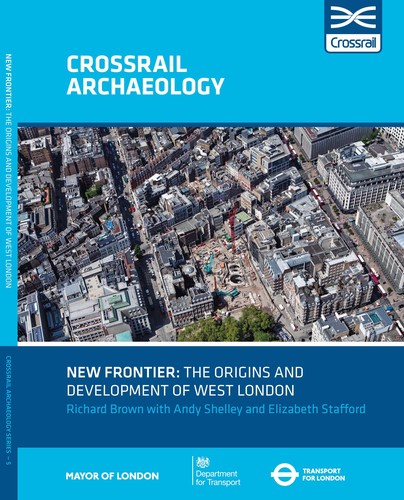
Format: Paperback
Pages: 119
ISBN: 9780904220803
Pub Date: 15 Oct 2016
Series: Crossrail Archaeology
Illustrations: 97 illustrations
Description:
Oxford Street, Paddington Station, Soho; these are some of the most iconic landmarks of the capital and famous throughout the world, but the telling of their history is frequently an aside to the story of the City - the birthplace of the Capital with its Roman origins,Norman citadel, medieval buildings and financial dominance. But what lies beneath the busy streets and pavements of the West End? Why are there so many residential squares in this part of London?
How did this agricultural landscape on the periphery of the urban centre evolve into one of the most prized property markets in the world? This book shines a spotlight on the history and archaeology of West London. It is informed by the desk-based historical research, site excavations and archaeological monitoring carried out before and during the construction of the western arm of Crossrail as it travels below ground from the tunnel portal at Royal Oak to Fisher Street via brand new stations at Paddington, Bond Street and Tottenham Court Road - a journey which includes the discovery of ice age Bison and reindeer, the rediscovery of long lost rivers and reveals the history of the Georgian property developers and the Great Western Railway.


Pages: 332
ISBN: 9789088903830
Pub Date: 15 Oct 2016
Illustrations: 142fc/40bw
Pages: 332
ISBN: 9789088903694
Pub Date: 31 Oct 2016
Illustrations: 142fc/40bw
Description:
Every year thousands of archaeological objects and artefact scatters are discovered by the public, most of them by metal-detector users, but also by people whilst out walking, gardening, or going about their daily work. Once recorded, these finds hold enormous potential in helping us understand the past. In England and Wales these finds are reported to the Portable Antiquities Scheme (PAS), and since 2003 over one million finds have been recorded.
This book explores the significance of PAS data for Lincolnshire, in particular how these finds enhance the 'known' archaeological record, and how they come together to form multi-period artefact scatters, defined here for the first time as 'plough-zone palimpsests'. A bespoke methodology is developed that allows PAS data to be analysed at different scales of time and place. This brings into focus different sources of bias and different interpretative possibilities. A series of case studies then explore these palimpsests on varying scales of time and place. These demonstrate how portable antiquities are important biographical components of 'temporally-sticky' or ‘persistent places’, and have the potential to reveal structuring within the landscape over long-periods of time. Combined with other evidence engrained within the landscape, PAS data help to explain how the past influenced the subsequent use of places, and how the aftershocks of human activity resonate in the landscape today.
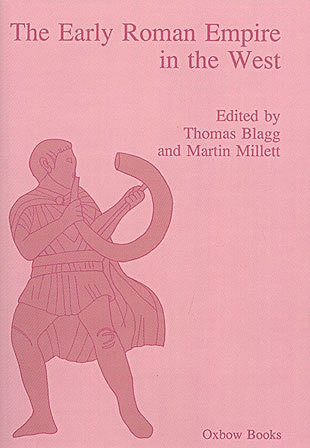
Format: Paperback
Pages: 256
ISBN: 9781842170694
Pub Date: 15 Oct 2016
Illustrations: b/w figs
Description:
Digital reprint of this important collection of papers which form the companion to ' Early Roman Empire in the East' (Oxbow 1997) . Fourteen contributions examine the interaction of Roman and native peoples in the formative years of the Roman provinces in Italy, Gaul, Spain and Portugal, Germany and Britain. Contents: Introduction ( Thomas Blagg and Martin Millett ); The creation of provincial landscape: the Roman impact on Cisalpine Gaul ( Nicholas Purcell ); Romanization: a point of view ( Richard Reece ); Romanization: historical issues and archaeological interpretation ( Martin Millett ); The romanization of Belgic Gaul ( Colin Haselgrove ); Lower Germany: proto-urban settlement developments and the integration of native society ( J.
H. F. Bloemers ); Relations between Roman occupation and the Limesvorland in the province of Germania Inferior ( Jurgen Kunow ); Early Roman military installations and Ubian settlements in the Lower Rhine ( Michael Gechter ); Some observations on acculturation process at the edge of the Roman world ( S. D. Trow ); Processes in the development of the coastal communities of Hispania Citerior in the Republican period ( Simon Keay ); Romanization and urban development in Lusitania ( Jonathan Edmondson ); Urban munificence and the growth of urban consciousness in Roman Spain ( Nicola Mackie ); First-century Roman houses in Gaul and Britain ( T. F. C. Blagg ); Towards an assessment of the economic and social consequences of the Roman conquest of Gaul ( J. F. Drinkwater ); The emergence of Romano-Celtic religion ( Anthony King ).




















